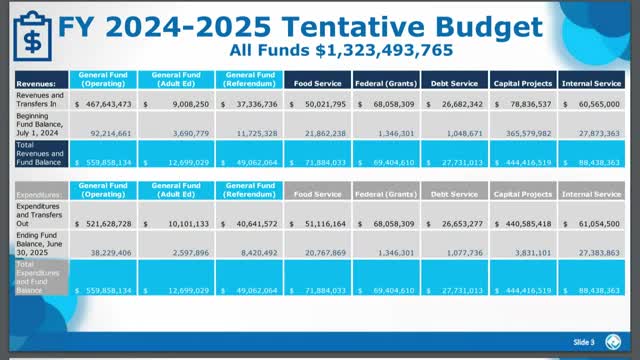Property values surge as funding strategies spark debate
August 09, 2024 | Marion, School Districts, Florida
This article was created by AI summarizing key points discussed. AI makes mistakes, so for full details and context, please refer to the video of the full meeting. Please report any errors so we can fix them. Report an error »

During a recent government meeting, officials discussed the implications of rising property values and their impact on local funding for education. The meeting highlighted that property values in Marion County have increased by approximately 11.7%, which is expected to generate an additional $20 million in local revenue despite a decrease in the required local effort millage set by the legislature.
Officials emphasized the importance of understanding the relationship between property values and funding. While property values are rising, the required local effort millage, which is mandated by state law, has decreased. This means that although the district is seeing an increase in property tax revenue, it does not directly translate to a proportional increase in funding for the school district.
The discussion also touched on the complexities of Florida's education funding system, which relies heavily on property taxes. Officials clarified that public education in Florida is primarily funded through local property taxes, and any adjustments to discretionary millages could significantly affect state funding allocations. The district must maintain certain millage rates to fully participate in the Florida Education Finance Program (FEFP), which is crucial for receiving state funds.
Concerns were raised about community perceptions regarding rising property taxes, particularly among new homeowners who may not benefit from the same protections as long-term residents under the \"Save Our Homes\" law, which caps annual increases in assessed property values. The officials noted that new homeowners often face higher tax bills based on current market values, leading to confusion and frustration.
The meeting concluded with a commitment to continue educating the community about the funding mechanisms and the necessity of maintaining certain tax rates to ensure adequate funding for local schools. The officials reiterated that while property values are rising, the district's ability to leverage those increases for educational funding is constrained by legislative requirements and the structure of the state's funding formula.
Officials emphasized the importance of understanding the relationship between property values and funding. While property values are rising, the required local effort millage, which is mandated by state law, has decreased. This means that although the district is seeing an increase in property tax revenue, it does not directly translate to a proportional increase in funding for the school district.
The discussion also touched on the complexities of Florida's education funding system, which relies heavily on property taxes. Officials clarified that public education in Florida is primarily funded through local property taxes, and any adjustments to discretionary millages could significantly affect state funding allocations. The district must maintain certain millage rates to fully participate in the Florida Education Finance Program (FEFP), which is crucial for receiving state funds.
Concerns were raised about community perceptions regarding rising property taxes, particularly among new homeowners who may not benefit from the same protections as long-term residents under the \"Save Our Homes\" law, which caps annual increases in assessed property values. The officials noted that new homeowners often face higher tax bills based on current market values, leading to confusion and frustration.
The meeting concluded with a commitment to continue educating the community about the funding mechanisms and the necessity of maintaining certain tax rates to ensure adequate funding for local schools. The officials reiterated that while property values are rising, the district's ability to leverage those increases for educational funding is constrained by legislative requirements and the structure of the state's funding formula.
View full meeting
This article is based on a recent meeting—watch the full video and explore the complete transcript for deeper insights into the discussion.
View full meeting